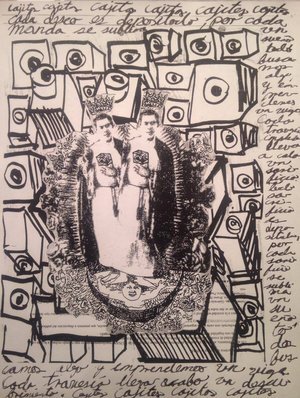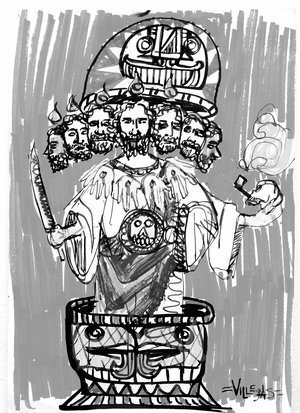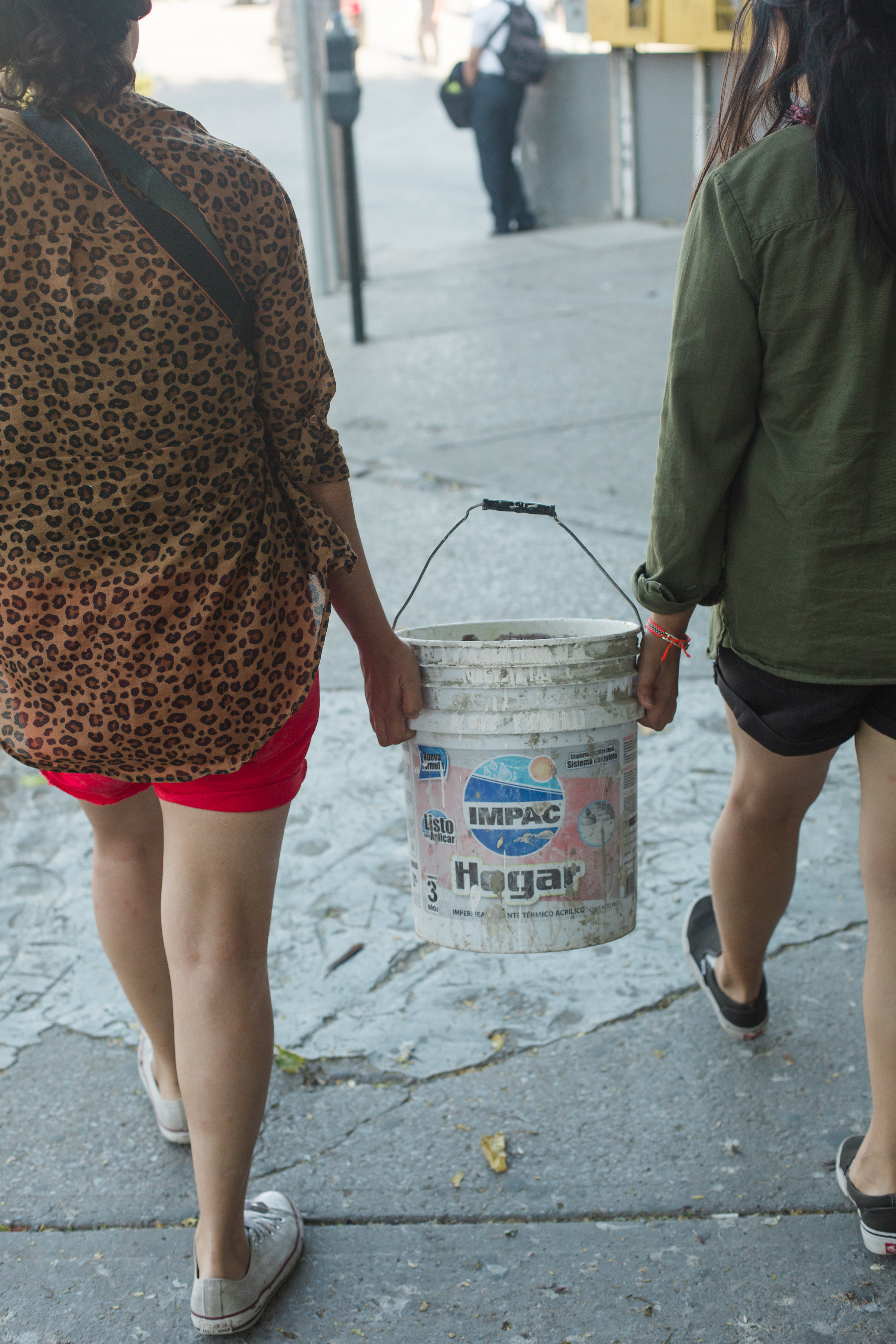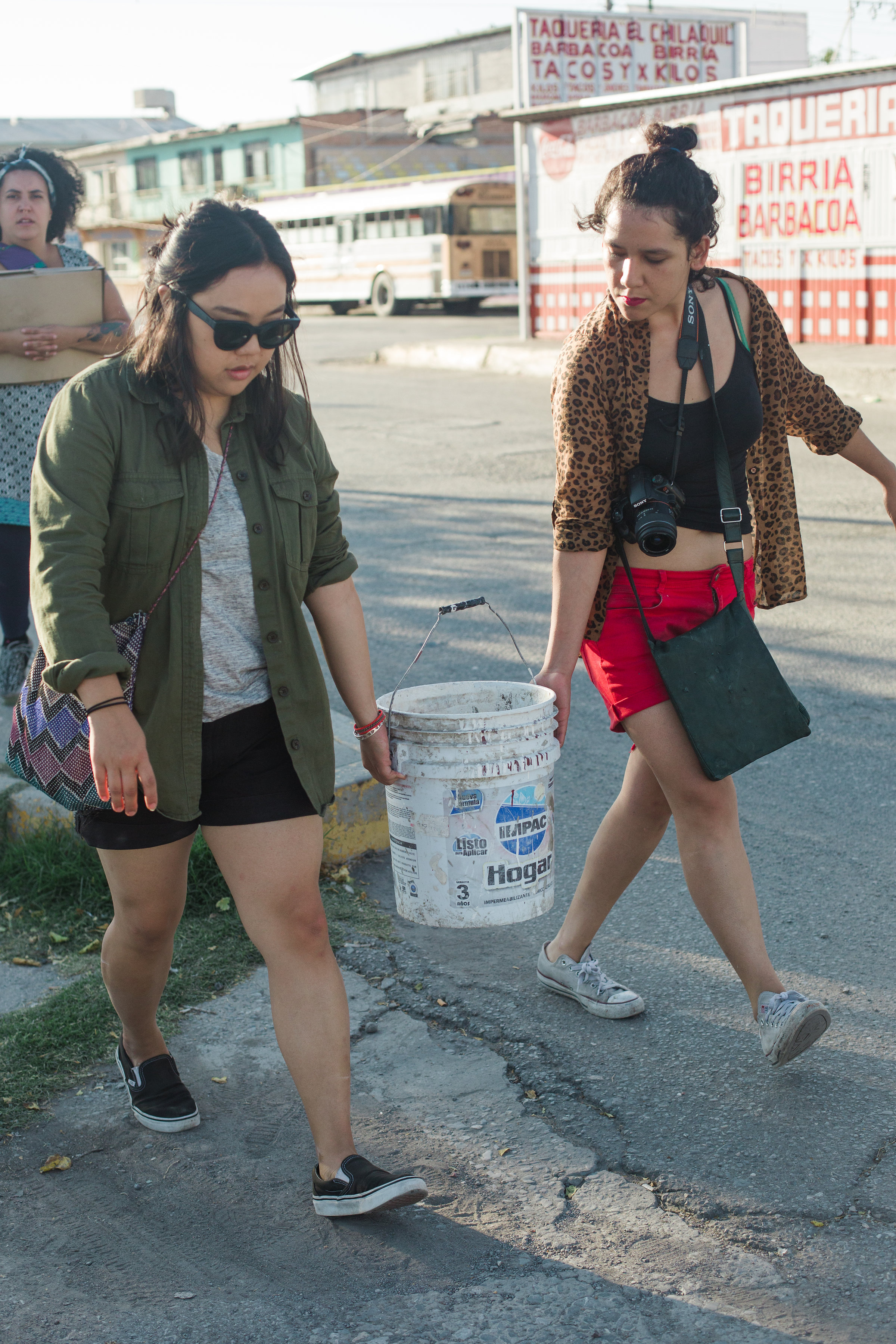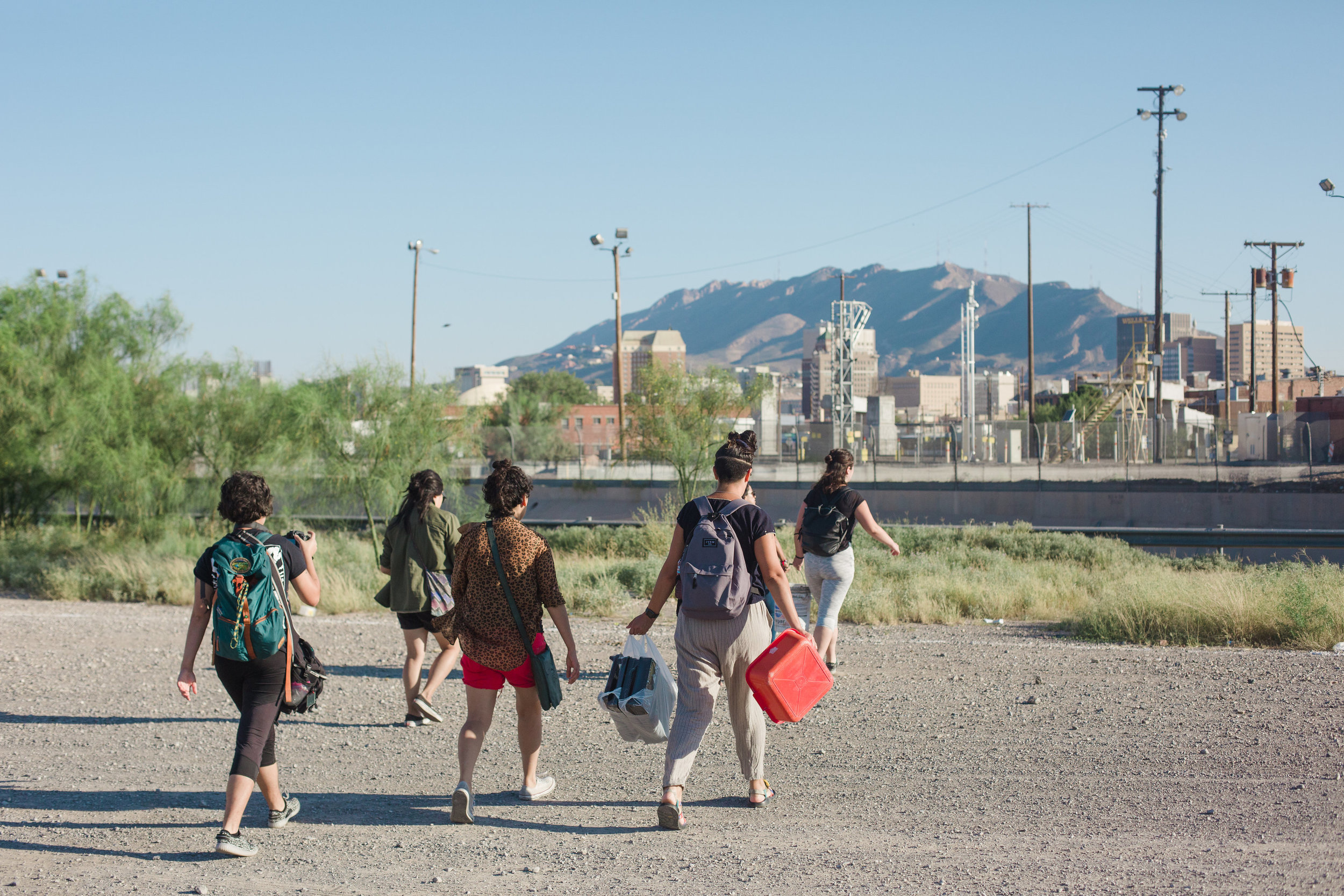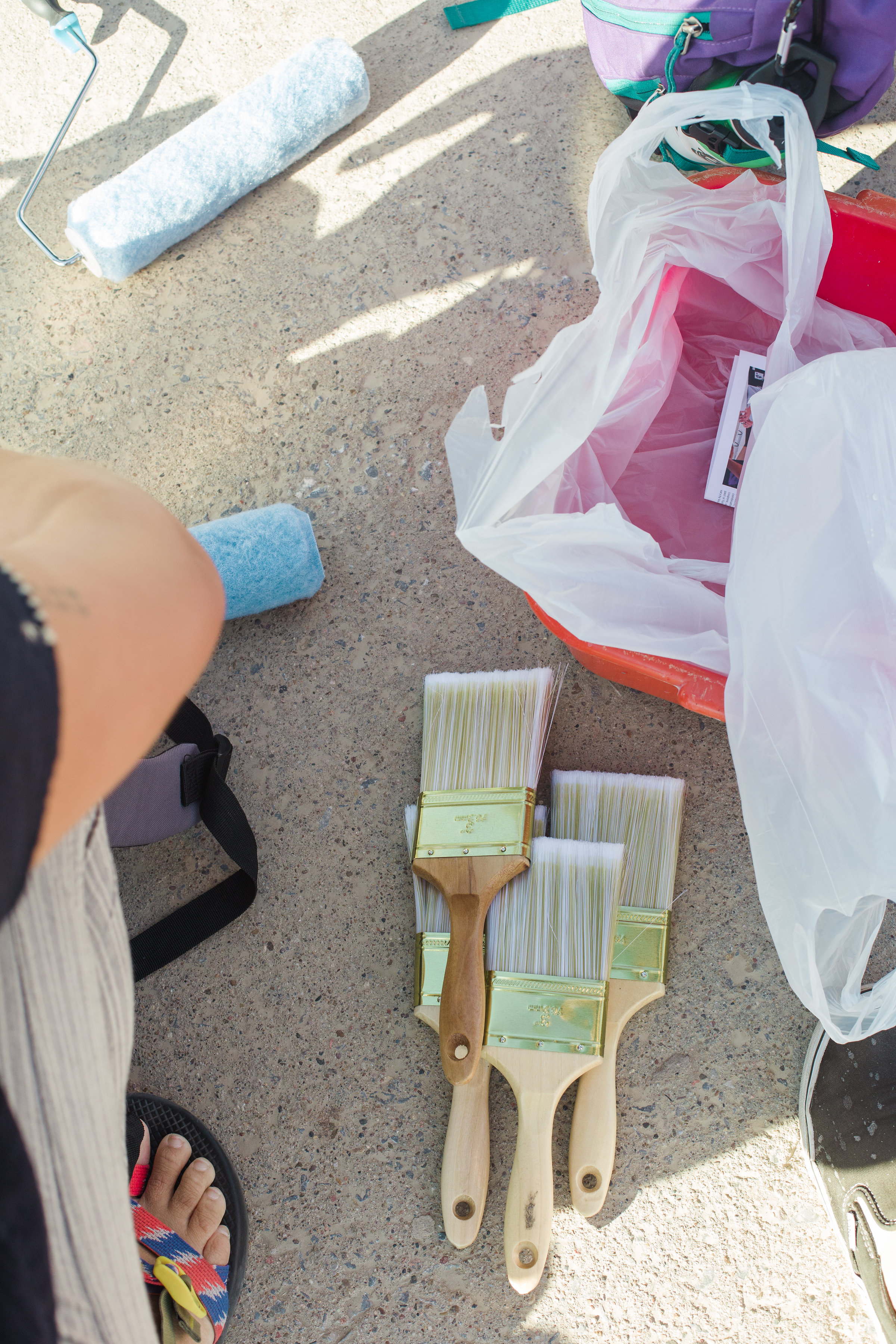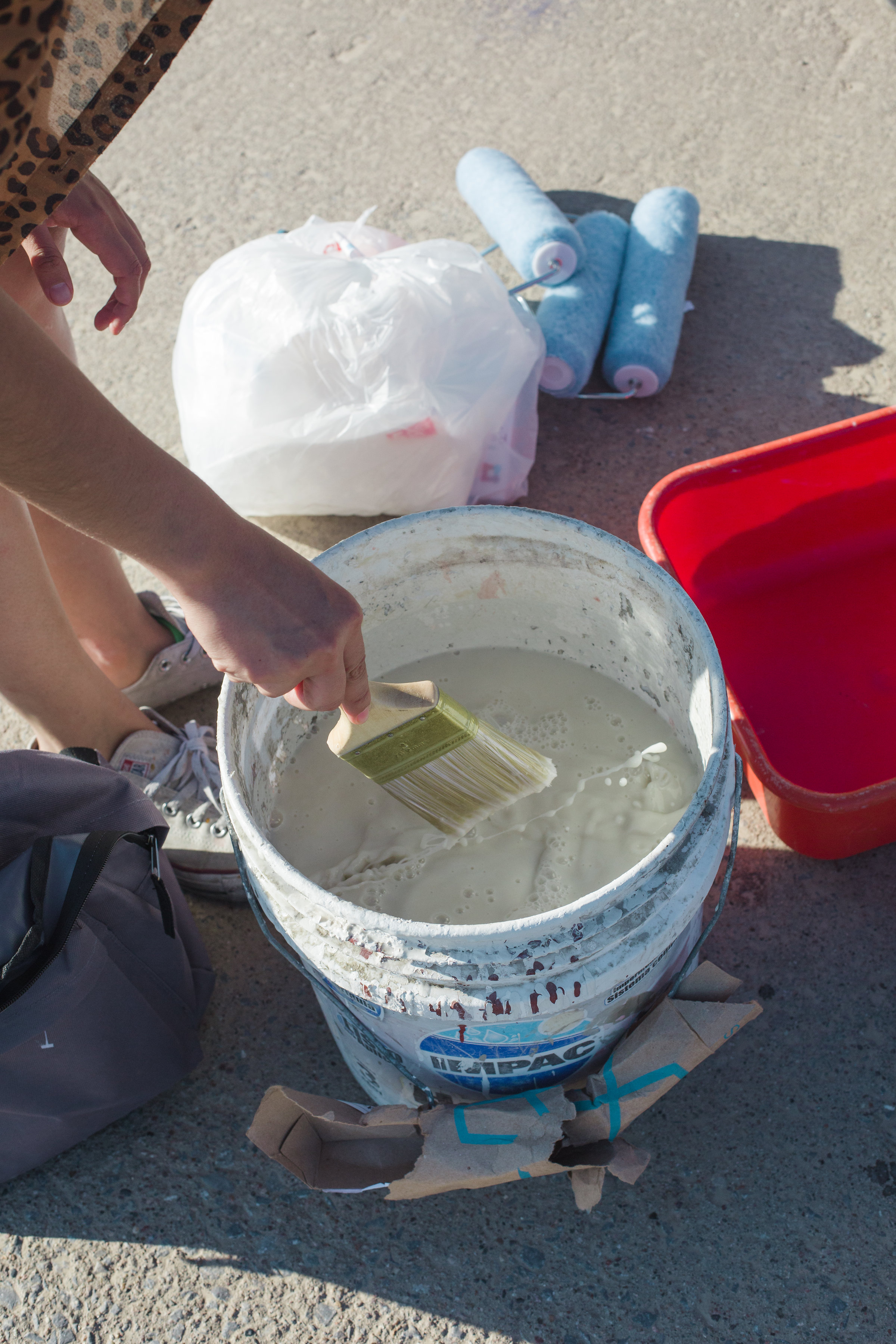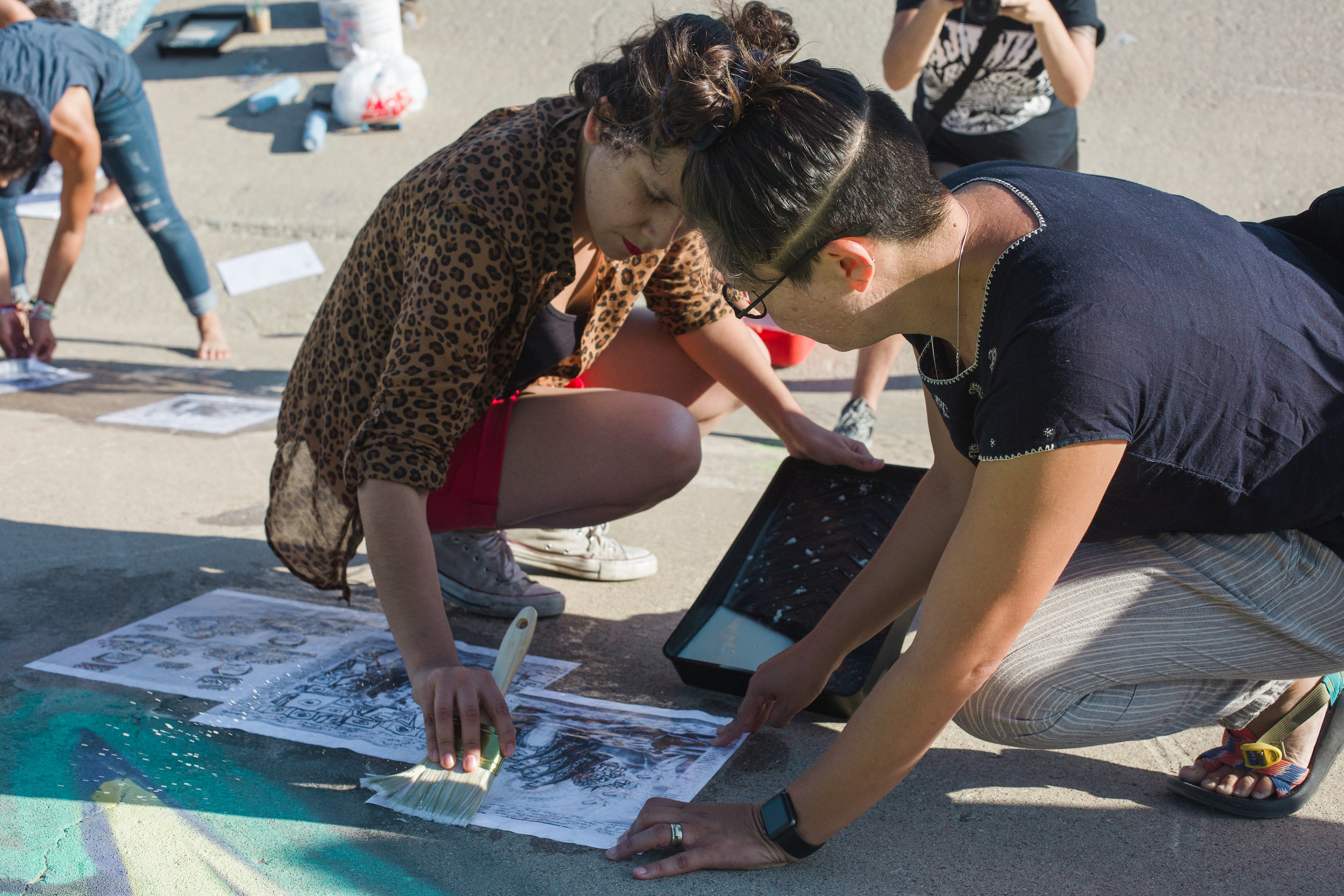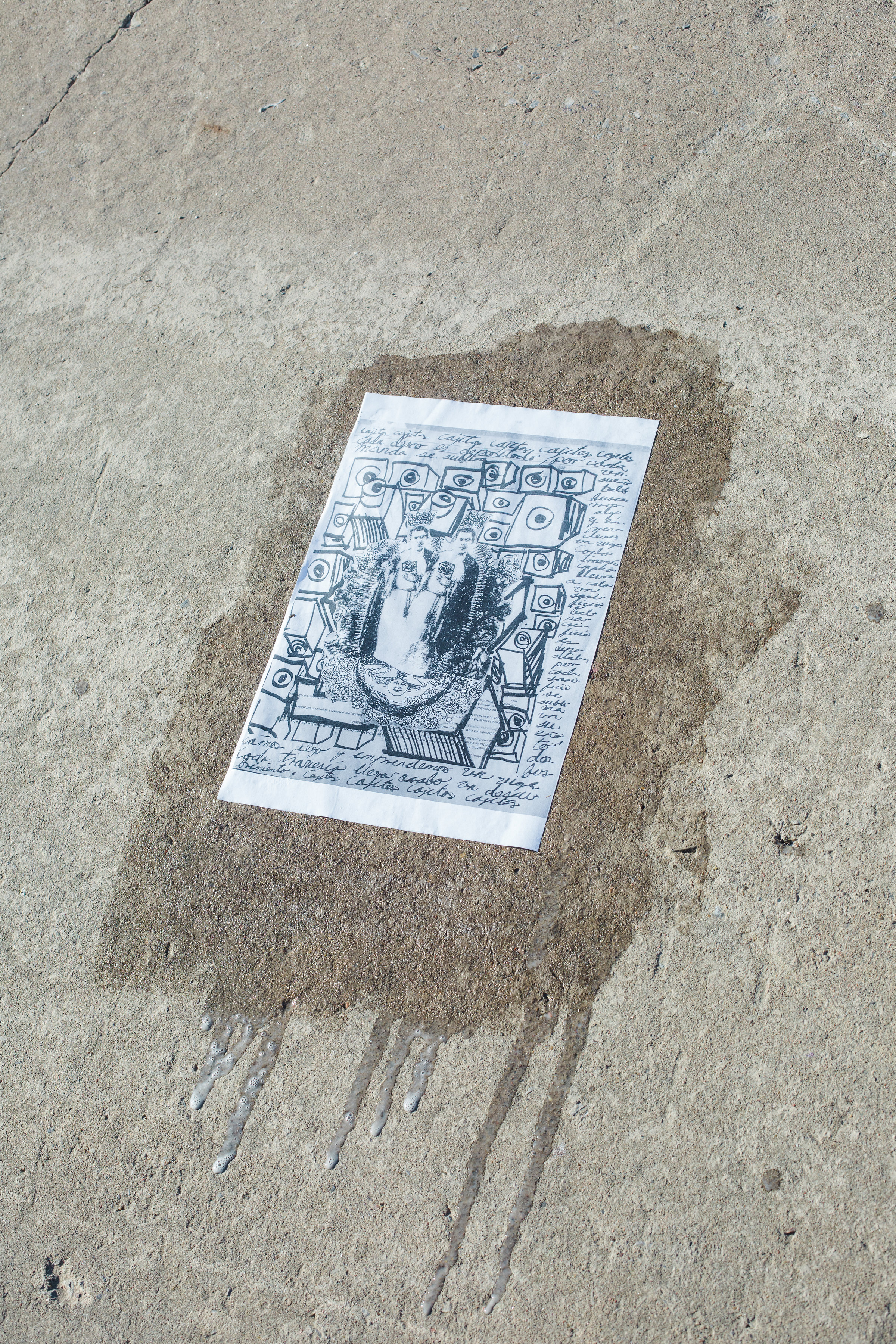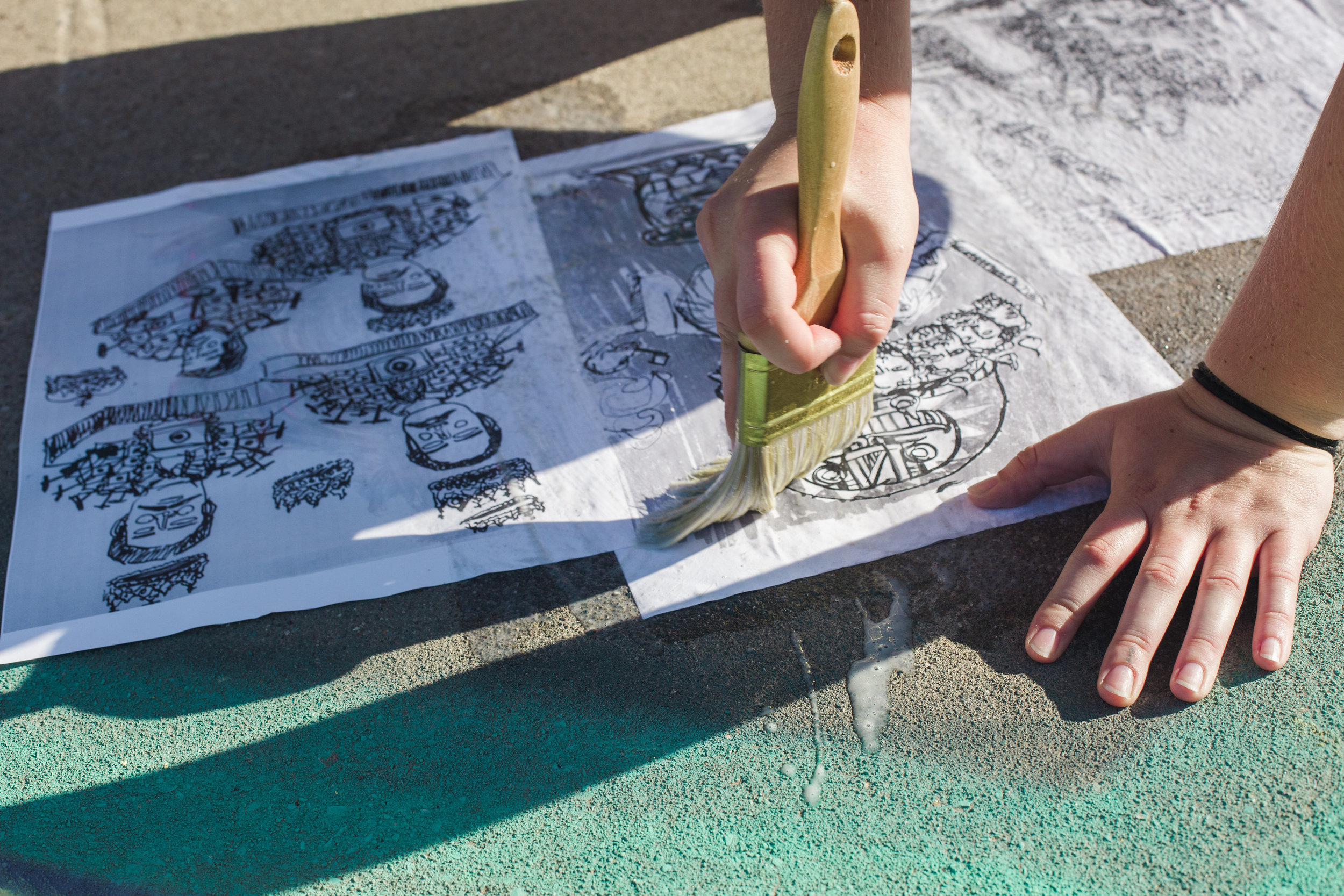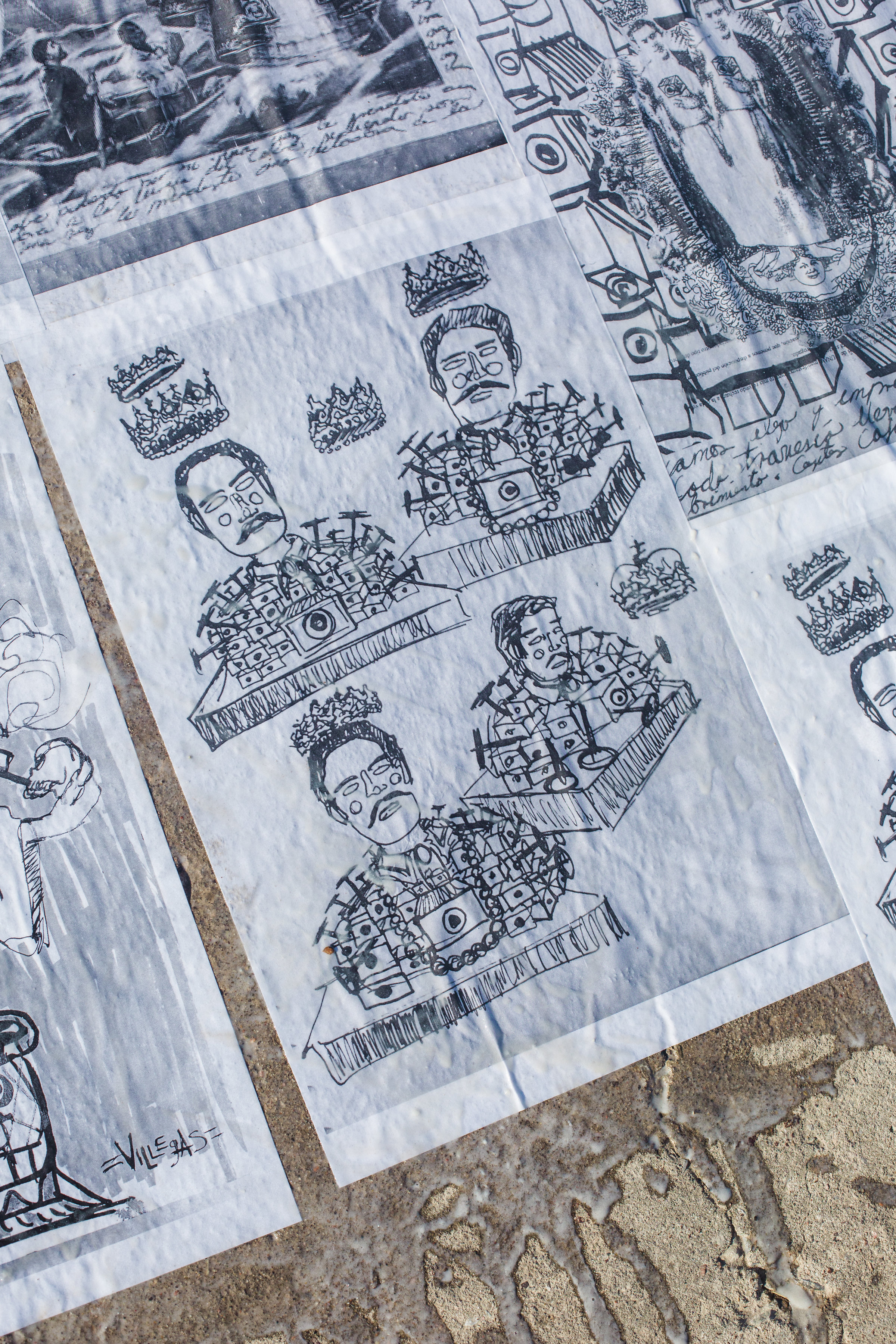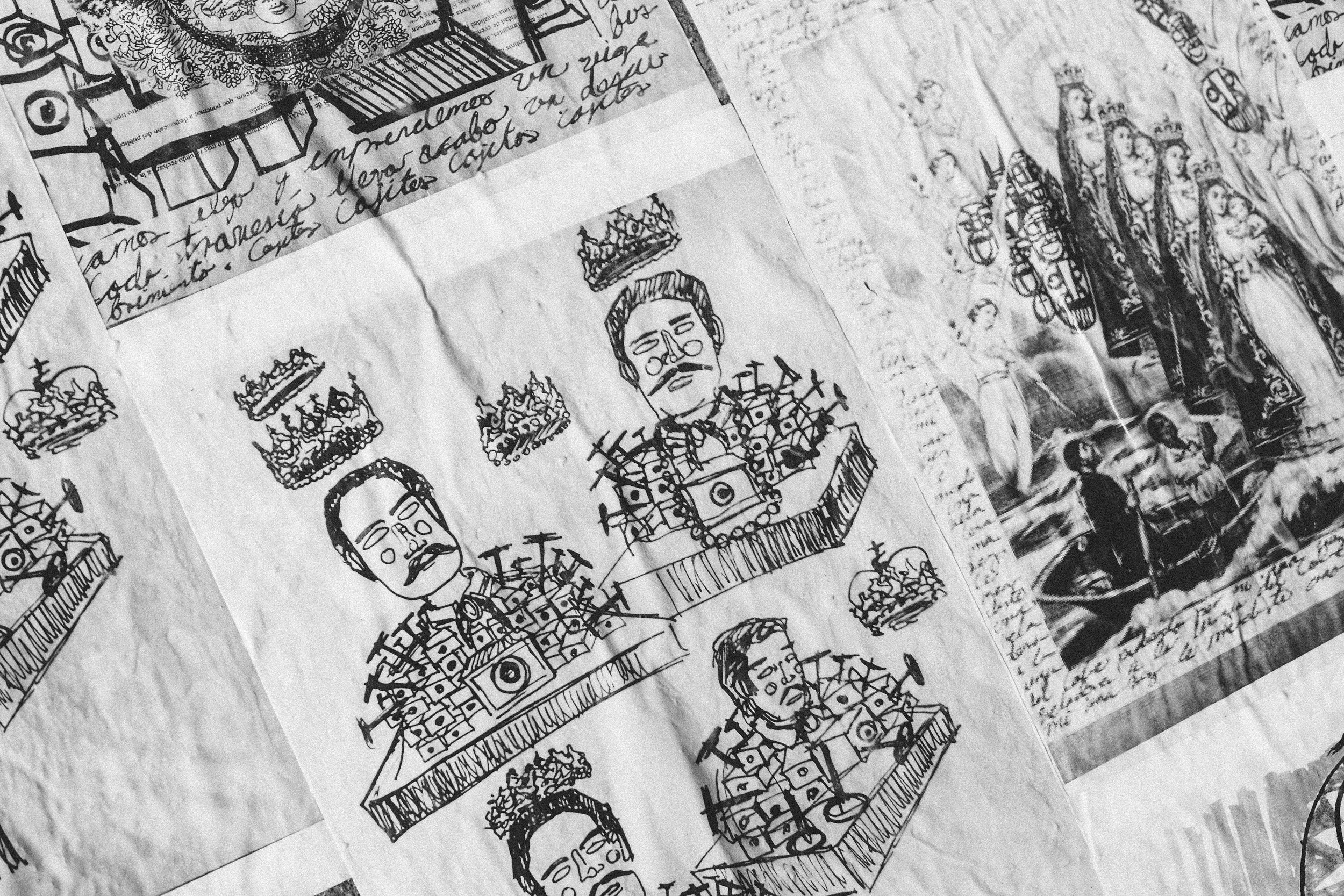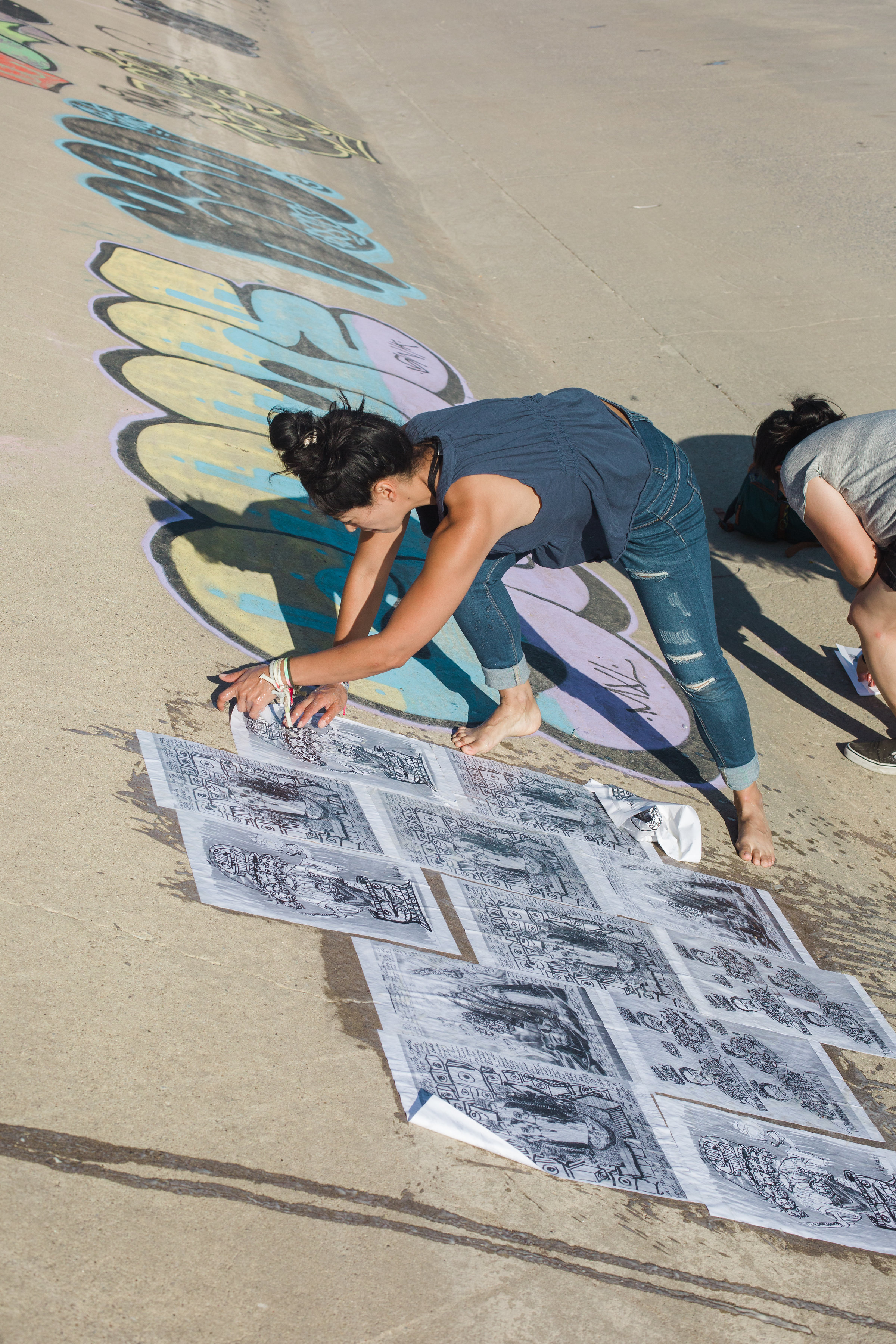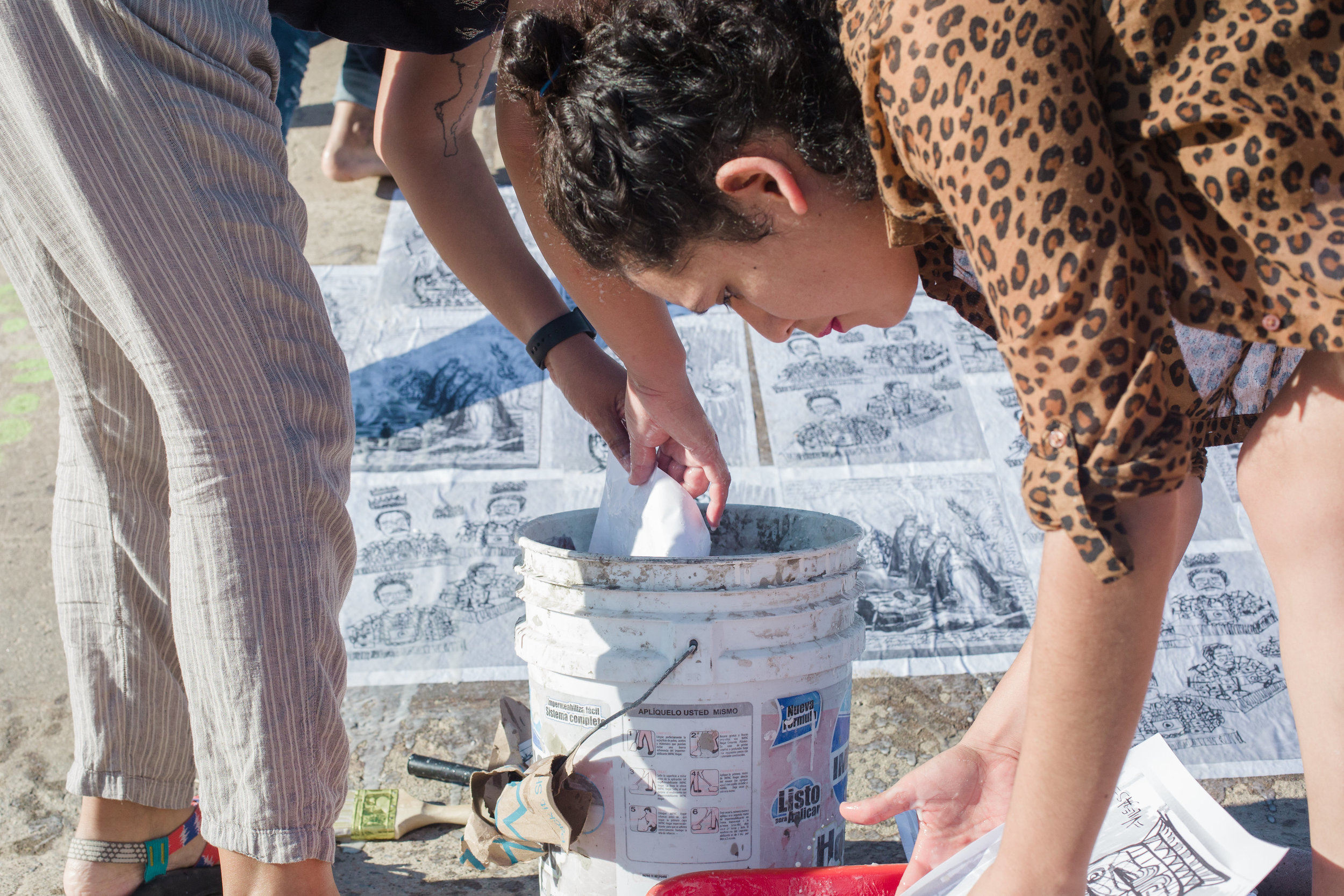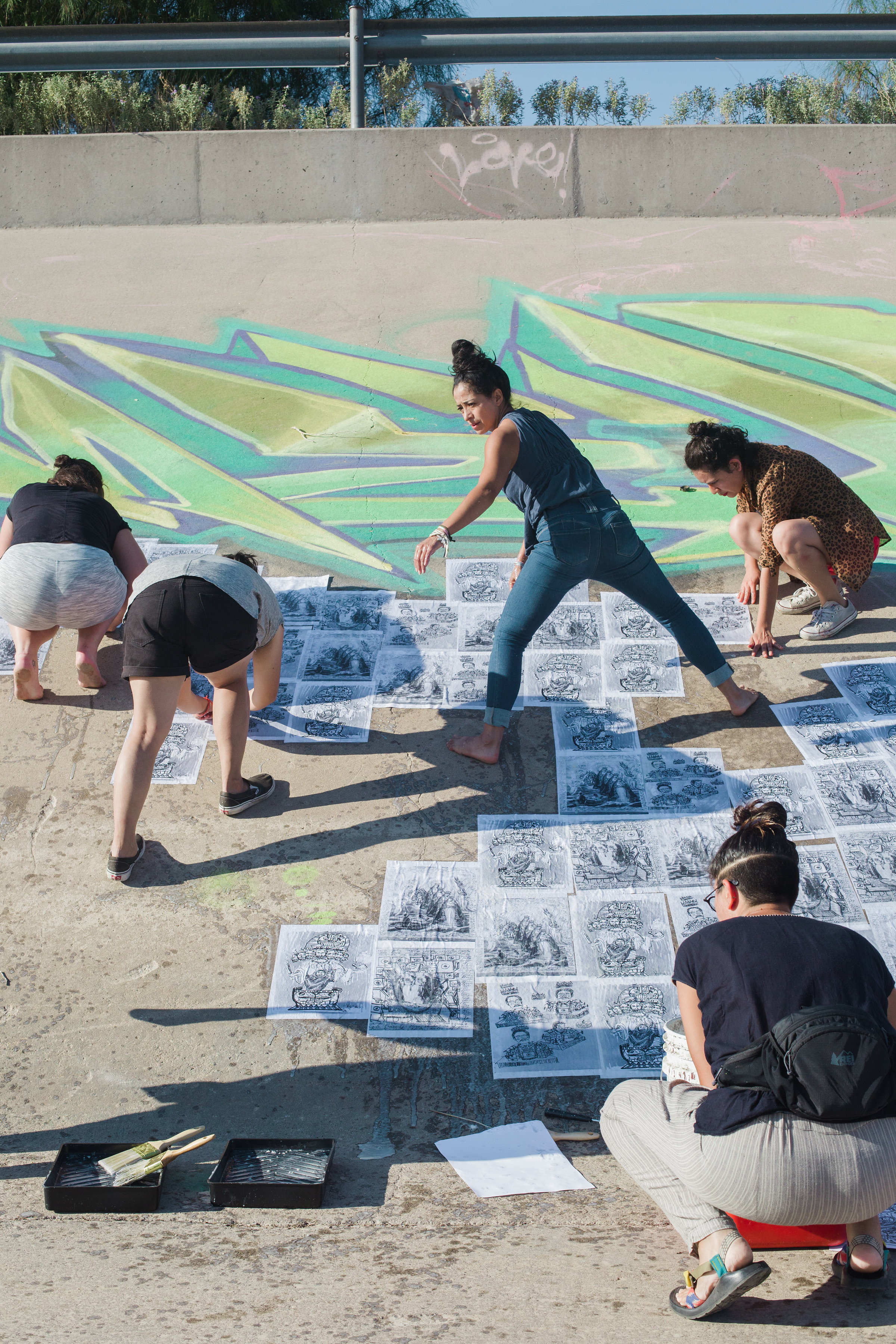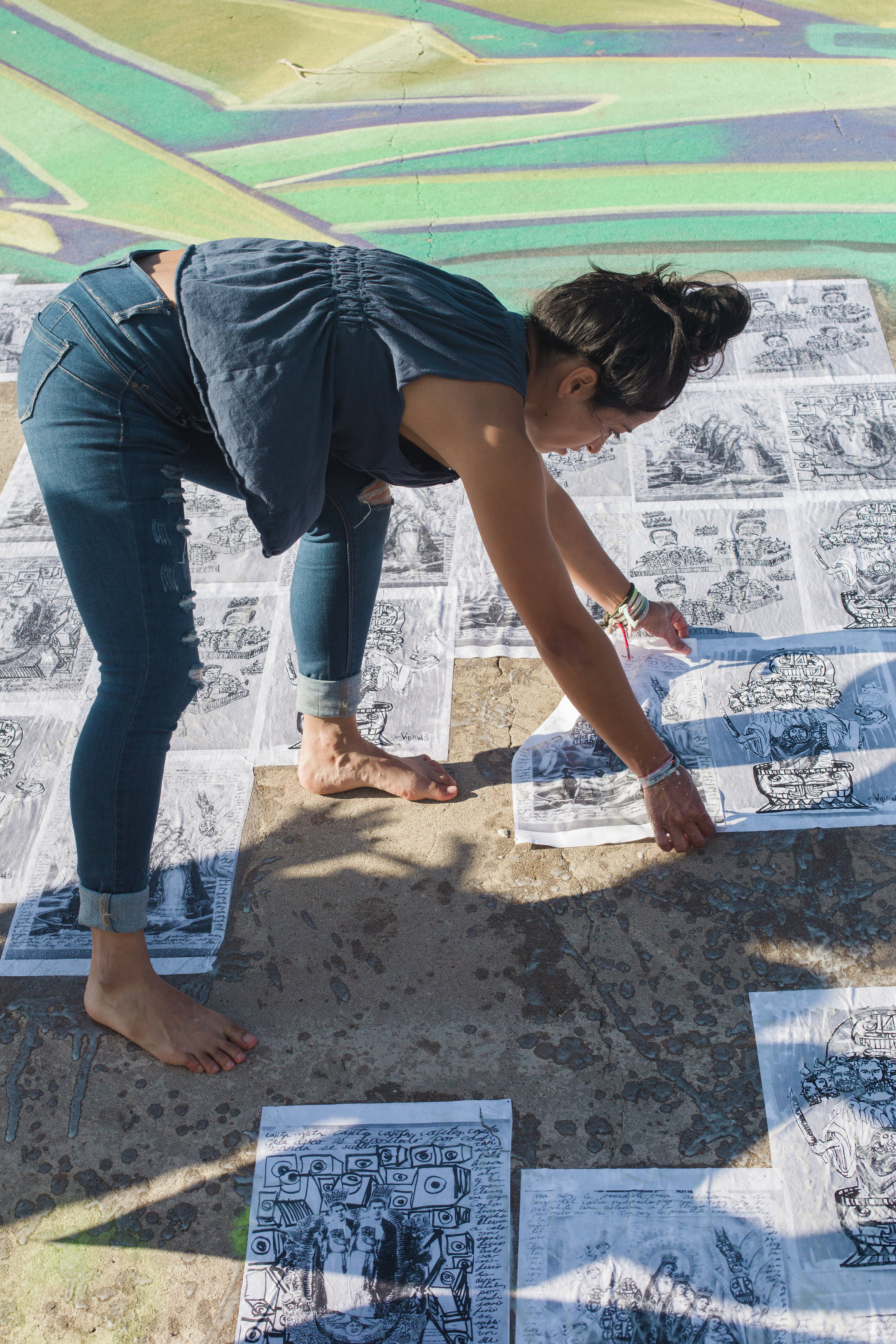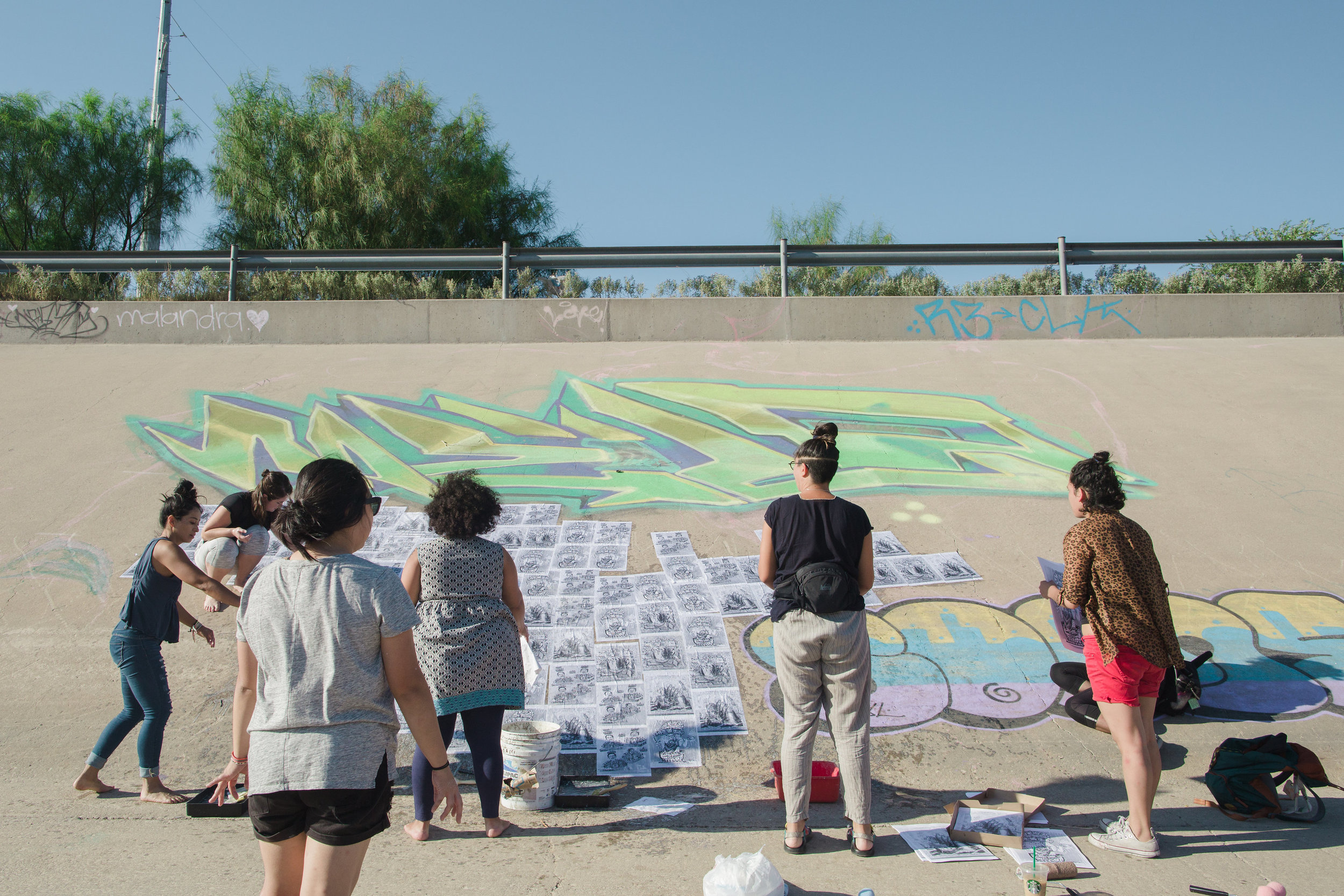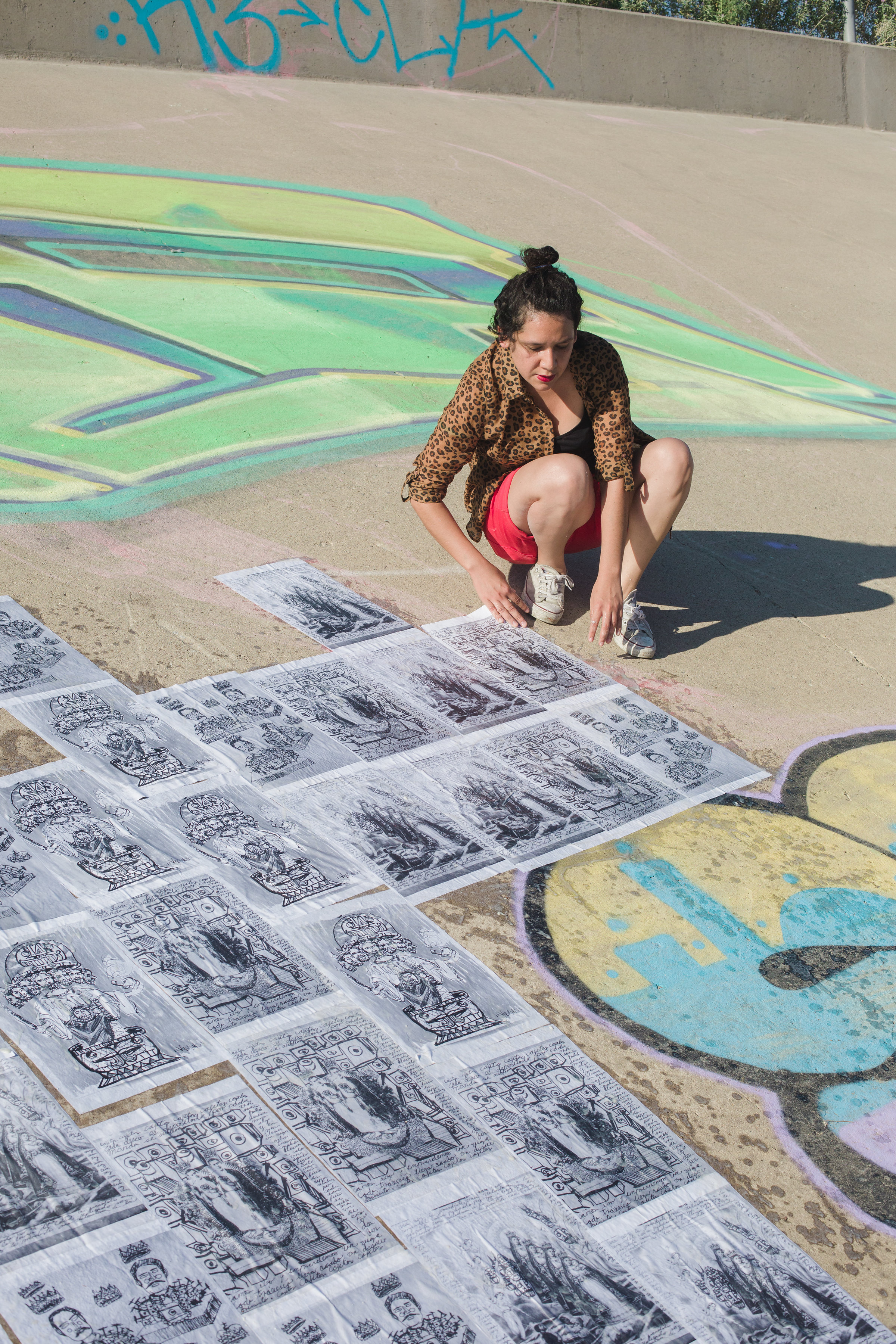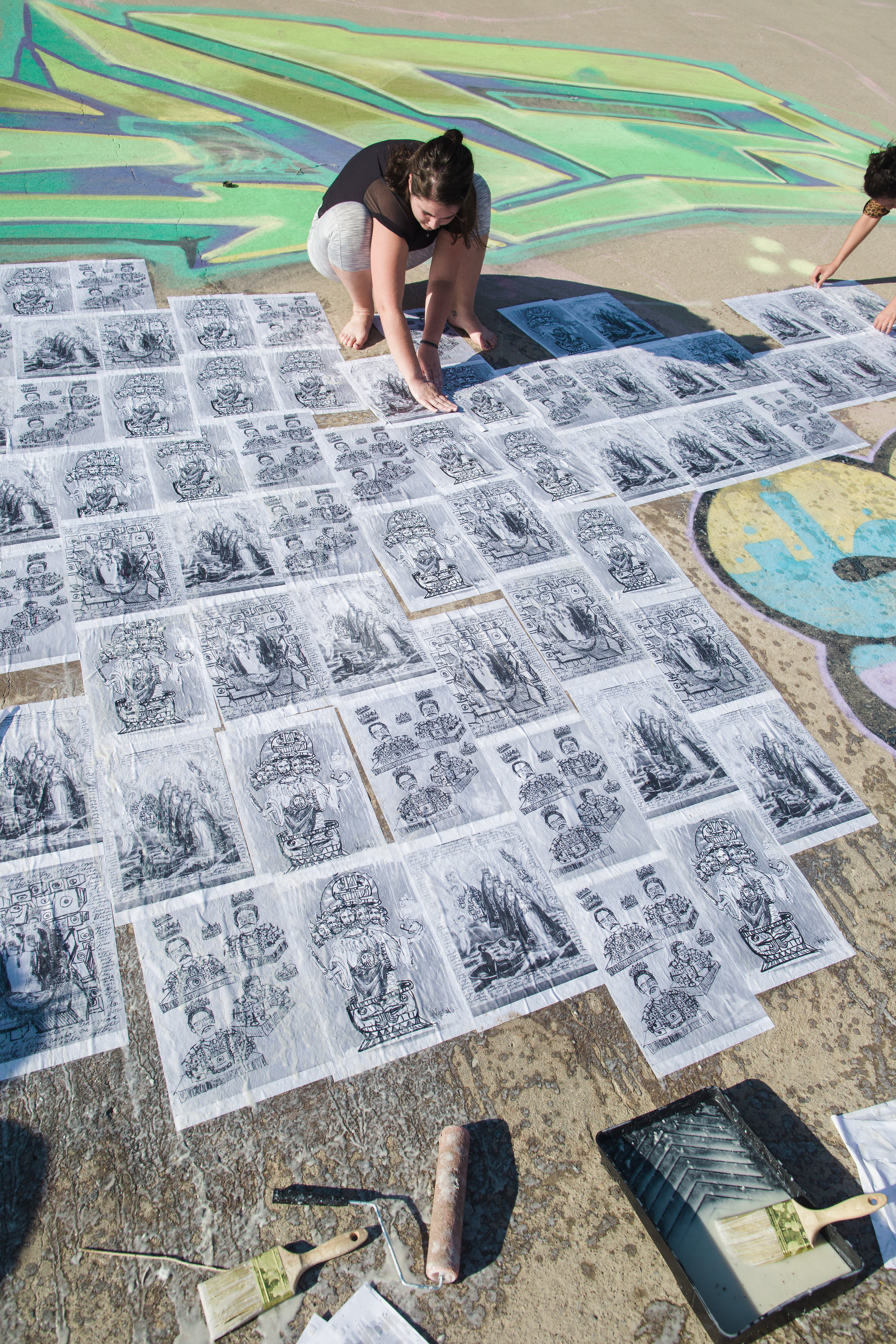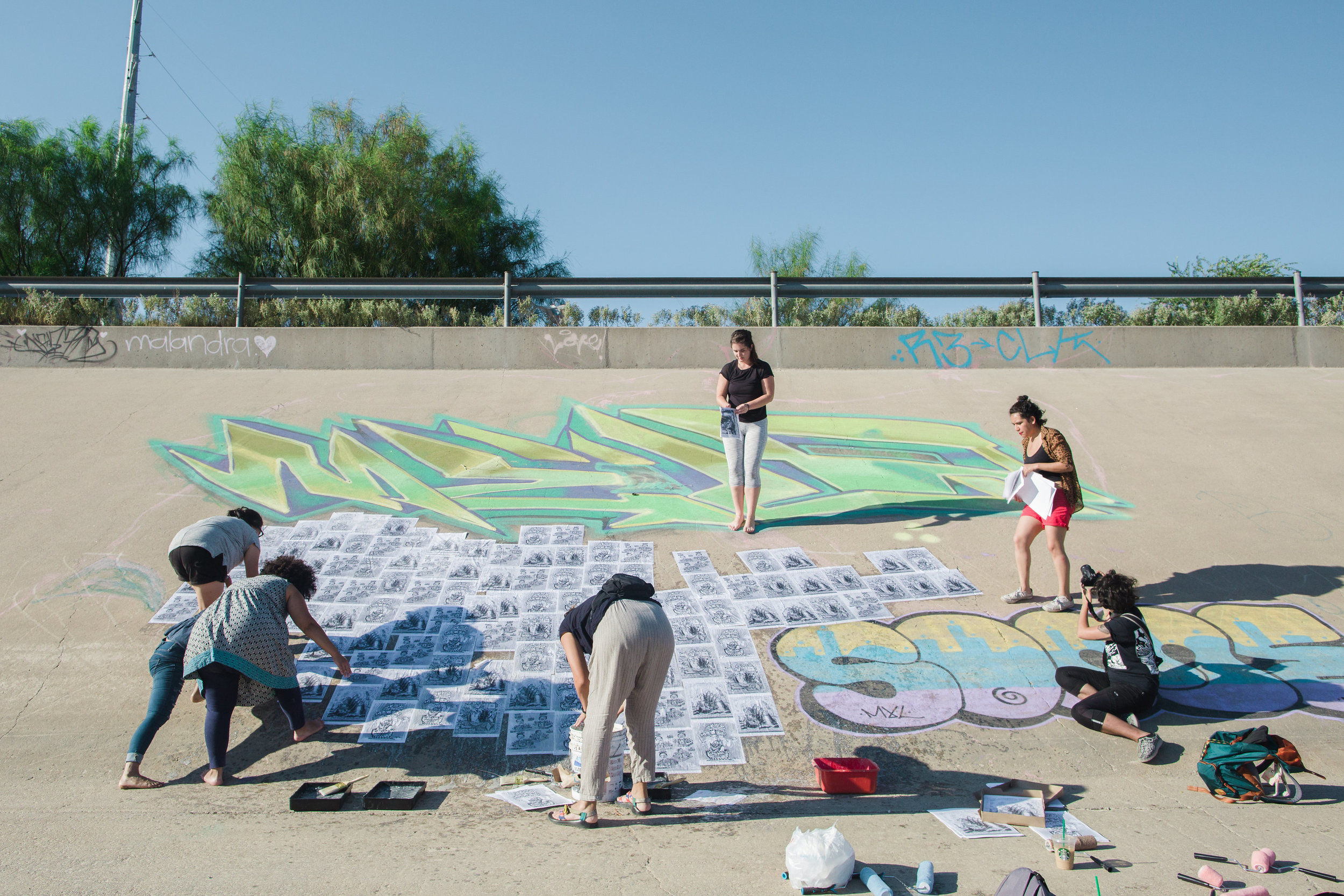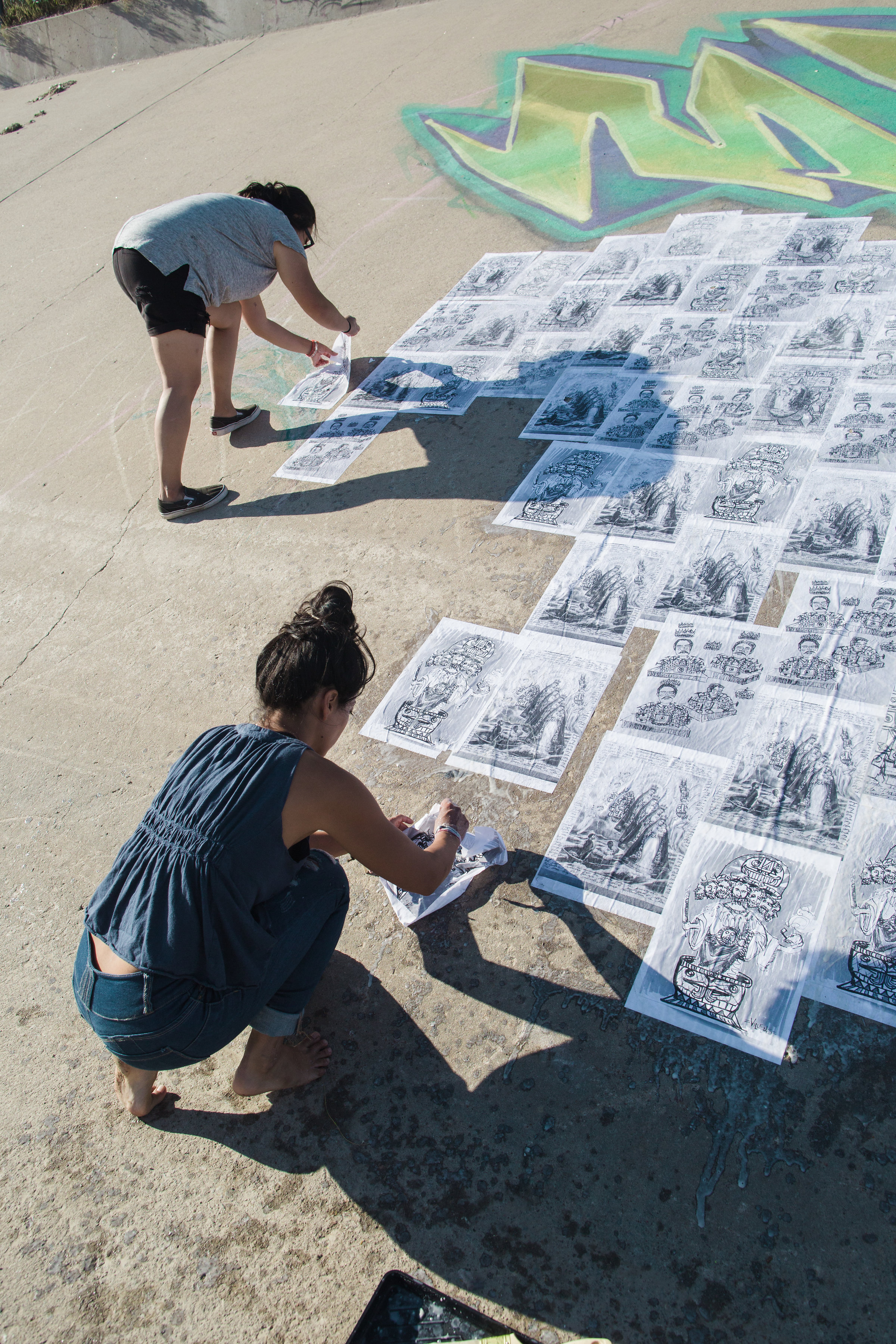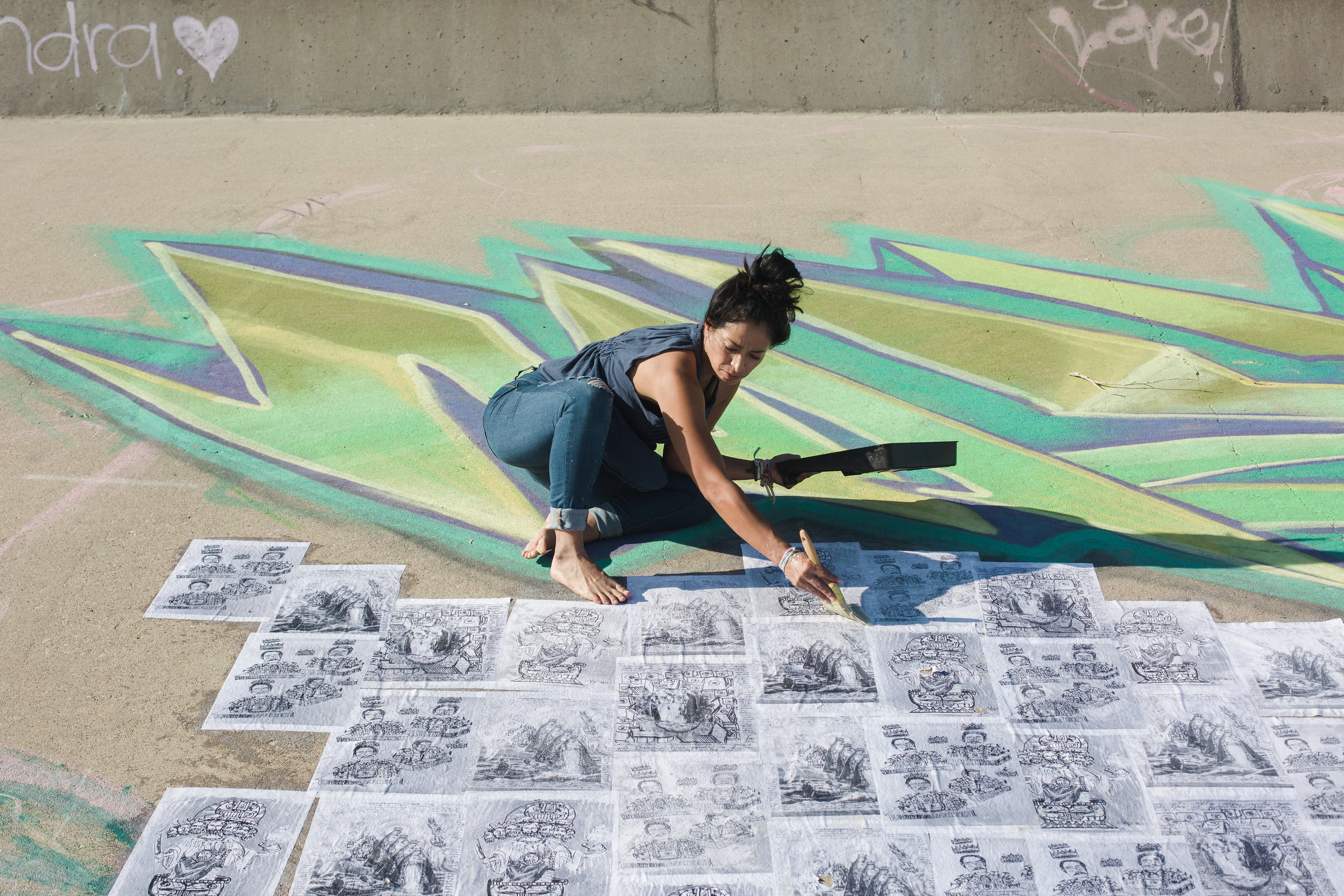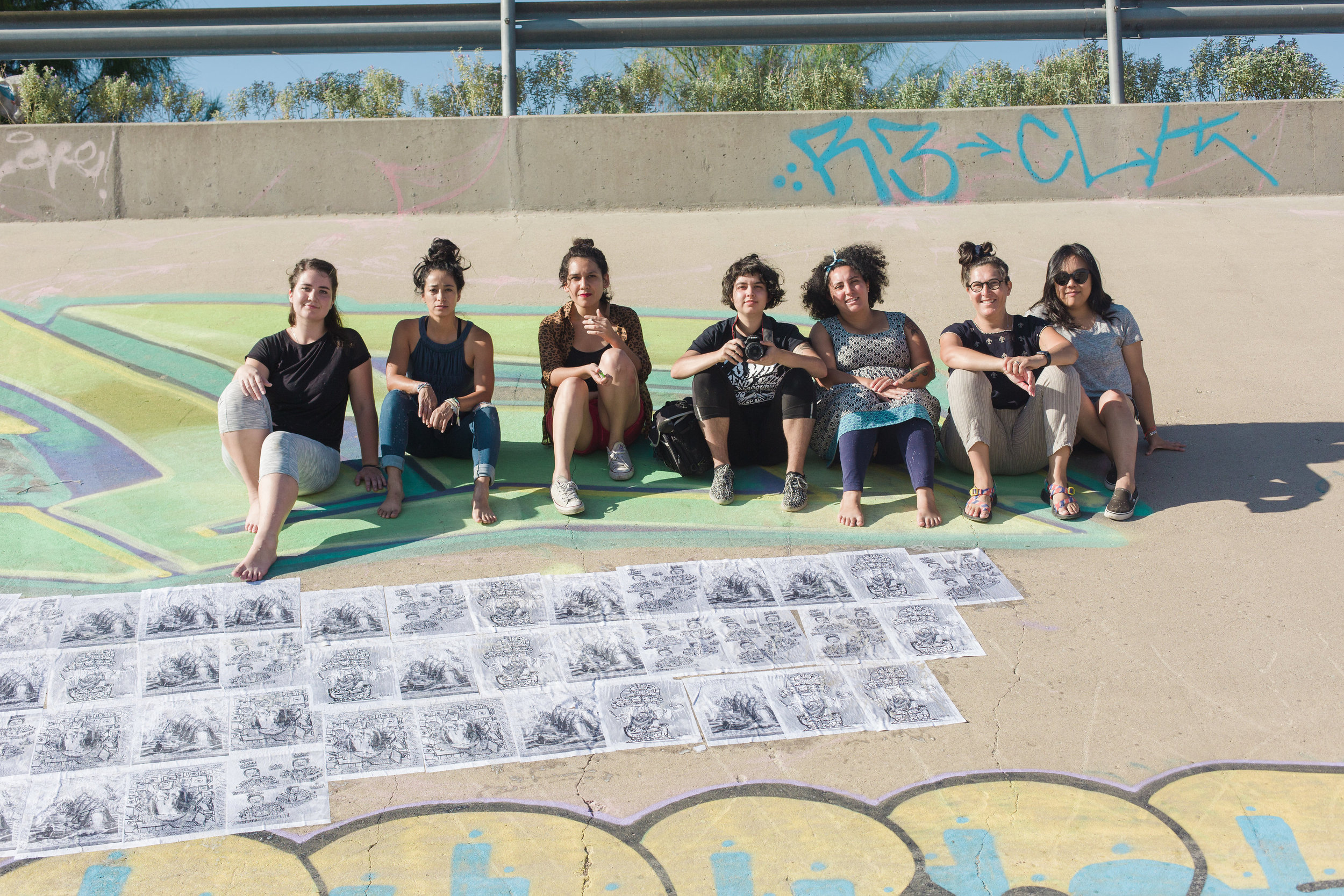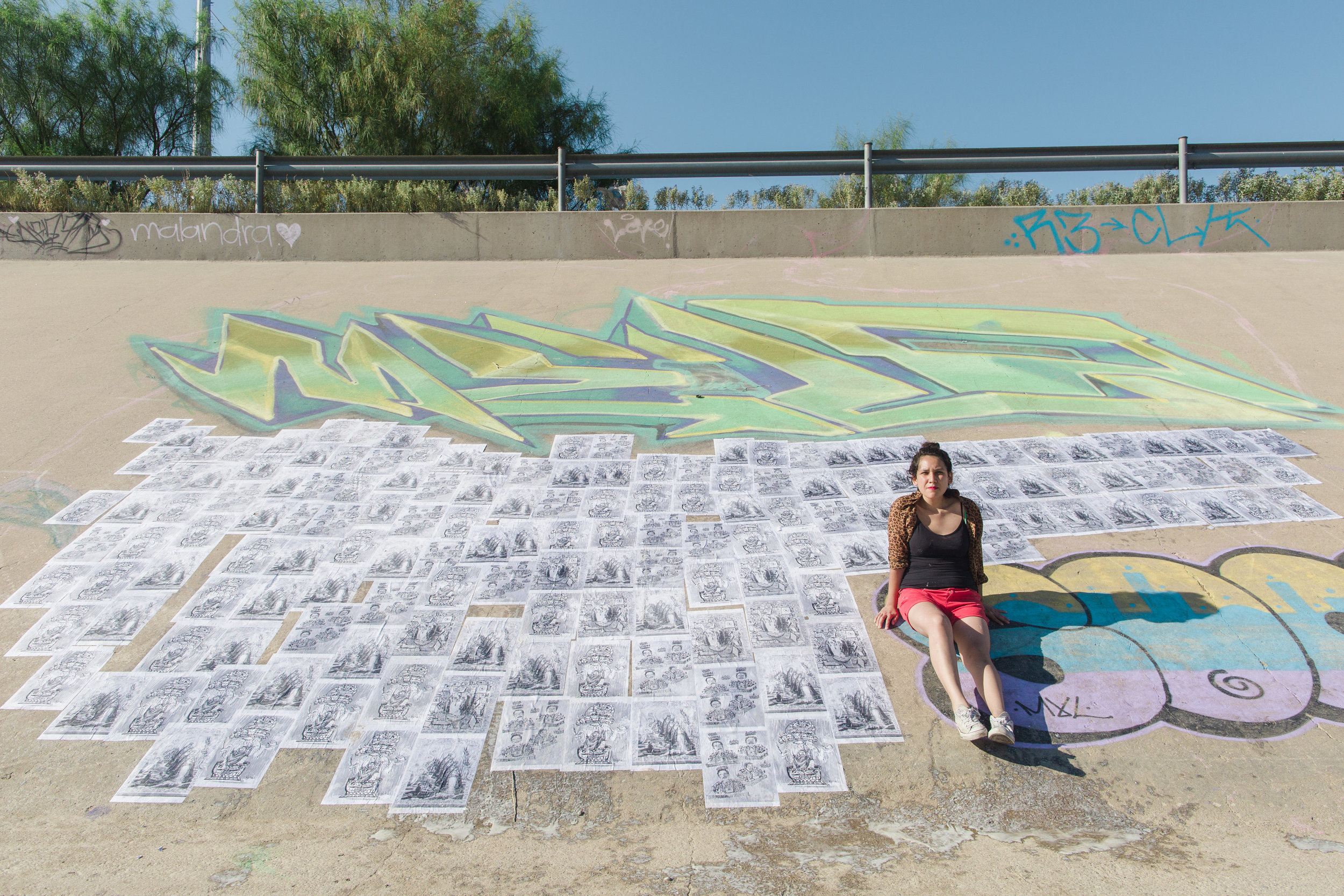PETITIONS THROUGH THE WALL
Under which criteria can an artist create a proposal to expose a social phenomenon like the migratory diasporas that are defining the 21st century? This is the question that sparked Veronica Villegas’ curiosity to develop Petitions through the wall.
Using her previous studies of the Tarot of Marseilles as a jumping off point, Villegas started a study of the social history of religious imagery and its representation in Mexican popular culture. Villegas used a similar methodology than that of an anthropological field study, visiting churches and walking alongside pilgrimages honoring popular saints. During her expeditions throughout Mexico City, Villegas found religious representations in alleyways known commonly as “cromos.” Using these as inspiration she developed Mind Guerrillas, a pictorial project in which she works directly with cromos. After working with these images for some time, Villegas decided to take them back to public spaces, in the form of street art.
In collaboration with AMBOS, Villegas traveled to Ciudad Juárez to continue her exploration of sacred spaces and reconnect with her personal family history, as she spent the first years of her life in Ciudad Juárez. She planned a public intervention using images she developed as part of Mind Guerrillas, which were printed in scale and wheat pasted onto the banks of the Rio Bravo, which run under the Santa Fe bridge, which connects El Paso, Texas and the historic downtown Ciudad Juárez.
This ephemeral mural hoped to represent the religious offerings made by Mexicans and immigrants from other regions of our continent who seek to cross the border onto the United States in hopes of better opportunities. The prayers that are held in each holy card represent the long wait in the long and treacherous journey that children, women and men have to endure to get to the border. The images used were of Saint Judas Tadeo, patron of desperate causes and Our Lady of Charity of El Cobre, patron saint of Cuba, a figure with connections to the African diaspora. Each image serves as a flag that narrates the stories of people that hope to circulate freely in search of better opportunities for personal development.
¿Bajo qué criterio puede un artista establecer una propuesta para exponer un fenómeno social como las diásporas migratorias que están definiendo al siglo XXI? Fue la pregunta que despertó la curiosidad de Verónica Villegas para desarrollar Petitions through the wall.
Usando como antecedente su estudio de la baraja del Tarot de Marsella, Villegas inició un estudio de la historia social de la imagen religiosa y su representación en la cultura popular de México. Villegas empleó una metodología similar a la de un antropólogo cuando realiza un trabajo de campo, visitando iglesias y acompañando peregrinaciones de los santos populares. Durante su exploración por la Ciudad de México, Villegas encontró representaciones religiosas en pasajes conocidas popularmente como “cromos” y usando estas como inspiración desarrolló Mind Guerrillas, un proyecto pictórico en el que trabaja directamente con cromos. A un tiempo de trabajar con estas imágenes, Villegas decidió llevarlas de vuelta al espacio público, a manera de arte callejero.
En colaboración con AMBOS, Villegas viajó a Ciudad Juárez para continuar con la exploración de los espacios sagrados y reconectarse con su historia familiar, ya que pasó sus primeros años de vida en Ciudad Juárez. Planeó una intervención pública usando imágenes que desarrolló en Mind Guerrillas, las cuales fueron impresas a escala y pegadas en el canal de la frontera que pasa por debajo del puente fronterizo Santa Fe, ubicado entre la ciudad de El Paso, Texas y el centro histórico de Ciudad Juárez.
Éste mural efímero buscó representar las ofrendas puestas en imágenes de culto por miles de Mexicanos e inmigrantes de otras regiones de nuestro continente que buscan cruzar la frontera a los Estados Unidos para obtener mejores oportunidades de vida. Las plegarias que son depositadas en cada estampa representan las pausas en el largo y peligroso trayecto que niños, mujeres y hombres realizan para llegar a la frontera. Se utilizaron las imágenes de San Judas Tadeo, patrón de las causas desesperadas y la Virgen de la Caridad del Cobre, patrona de Cuba, una figura con conexiones a la diáspora migratoria africana. Cada imagen sirve como estandarte que narra la historia de las personas que buscan circular libremente en busca de mejores oportunidades de desarrollo.
VERONICA VILLEGAS BARRAZA
Ciudad Juárez, Chihuahua. México, 1989. Based in Mexico City, she received a Bachelor’s and Master’s degree in Visual Arts and Design from Universidad Nacional Autónoma de México. In her creative process as a painter and collage maker, she investigates the aesthetics of popular sacred art in diverse cultural contexts, focusing primarily on the transcultural nature of Latin America’s collective imagination. She believes these aesthetics speak metaphorically on social issues and use religious imagery to find a vehicle for communication and a sense of identity.
Ciudad Juárez, Chihuahua. México, 1989. Reside en la Ciudad de México, estudió licenciatura y maestría en la Facultad de Artes y Diseño de la Universidad Nacional Autónoma de México. La problemática que investiga su proceso creativo en el campo de la pintura y el collage se basa en la estética del arte sacro popular de diversos contextos culturales, enfatizando en la transculturación de los imaginarios latinoamericanos, los cuales exploran alegóricamente determinadas problemáticas sociales que se han servido de la imagen religiosa para encontrar una vehículo de comunicación y sentido de identidad.


